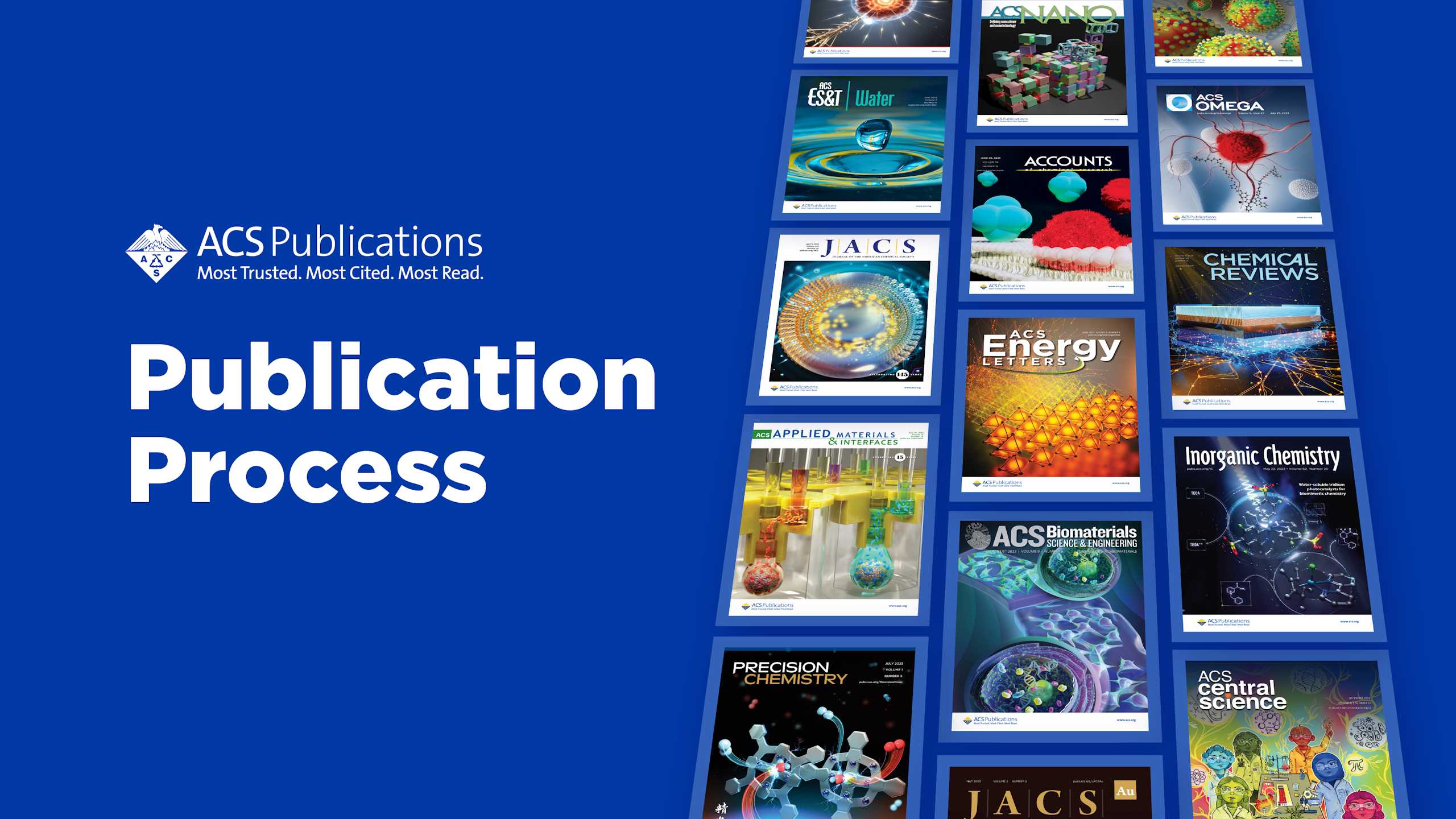From submission to published article, learn how ACS Publications supports researchers at each step of the publishing process to ensure trust and uphold the integrity of the scholarly record.

In a complex world rife with mistakes and misinformation, you can’t overstate the value of research you can trust. To build on discoveries and help improve lives through the transforming power of chemistry, it’s paramount that readers can trust the information they base their own research on, and that authors know that the publisher they choose to work with has their best interests at heart. Given the rise of AI authoring tools and paper mills, the work that goes into developing and shaping each original research article from submission through to final publication—and beyond—has never been more important.
So, what does ACS Publications do once a manuscript is submitted? How does ACS Publications help build trust?
The initial review stage
ACS Publications diligently handles hundreds of thousands of manuscripts each year as they pass through an initial vetting process prior to peer review.
When a manuscript is first submitted to an ACS journal, it is reviewed by our team of subject matter experts with their fingers on the pulse of where the field is headed. ACS Publications has an editorial presence in dozens of countries, a global network of more than 900 editorial staff. Their initial review of each manuscript focuses on the soundness of the science, and the novelty and importance of the research. This initial step also includes verifications using a suite of integrated software to minimize potential fraud, helping ensure the integrity of the scholarly record from the first step of the publishing process.
In addition to this editorial vetting process, ACS Publications offers complimentary professional development programs for researchers. ACS Author Lab is a complete self-paced course which expounds upon each step of the publishing process, while Author University provides a range of short videos featuring members of our expert editor and author community about the many aspects of authorship and publication.
ACS Publications editors can connect authors with language editing services and may recommend transferring an article to another ACS journal that is a better fit for its scope and audience. Together, these steps can help authors produce the strongest possible initial draft, increasing the likelihood of their research article progressing to peer review, and reaching the most interested audience for their research.
The peer review process
Coordinating a rigorous peer review process is an enormous undertaking. ACS editors identify and communicate with multiple qualified reviewers to ensure a rapid, yet thorough, review to provide authors with valuable feedback as quickly as possible (a matter of weeks for most ACS journals).
Similar to our author training tools, ACS Publications also provides the free ACS Reviewer Lab training course to help ensure that reviewers are well versed in the critical skills required to complete insightful and useful reports.
At the conclusion of the editorial and peer review process, authors receive valuable feedback to help guide their journey of scientific discovery and future publication. If the appropriate changes have been made to the manuscript and it is accepted for publication—and it’s at this stage that the research article enters production.
Preparing for publication
Publications confirms the authors’ open access preference and converts each accepted manuscript to a structured XML file, tags the research article with the appropriate metadata to ensure it can be discovered through a multitude of different channels, and undertakes typesetting to bring the work into a consistent format that readers value.
Manuscripts also undergo technical editing to keep them clear and succinct. Once this work is complete, the final version – also known as the version of record (VoR) – is published in the author's chosen journal.
Discovery, promotion, and long-term preservation
The work doesn’t end when a research article is published. Open access options are available in all ACS journals. For the vast majority of our authors, these are covered by an institutional read and publish agreement which includes an efficient workflow that automatically matches eligible authors to any available agreement.
Open access makes the article available to the widest possible audience, but discoverability is also key. Many readers use tools or services outside of publisher platforms to find articles in their field, and ACS Publications ensures that the research article is visible wherever readers are. Our article badging system clarifies for readers what type of access they have and any reuse rights that are associated with the article.
When an author publishes in an ACS journal, our team amplifies it through social media, journal and subject level marketing, article recommendation services, and a variety of other communication channels. This broadens the audience for the research article and helps readers discover and cite it—all tracked through a series of post-publication metrics enabling the author the ability to see the impact of their work in real time.
Because discoveries can be built on research published years ago, long-term preservation of the scholarly record is vital. ACS Publications ensures a permanent record of published work will always be available for future generations of scientists to discover.
Our editorial team also takes an active role in post-publication ethics reviews which may result in corrections or, in some cases, retractions ensuring readers have the definitive piece of trusted research.
Ongoing development of underlying technologies
Beneath all of the visible work involved in bringing a research article from submission through to the version of record, there’s a lot of development that scholarly publishers undertake. ACS Publications invests in its publishing platform and workflows to make sure they are continually being updated and improved to provide the smooth, simple experience that authors and readers expect. We develop and adopt new tools and technologies to identify bad actors and prevent them from flooding the trusted literature with low-quality information. Our membership of the STM Association and the Committee on Publication Ethics (COPE) helps us stay abreast of developments and develop policy responses that ensure journals from ACS Publications remain the most trusted, most cited, and most read.
We are the community
As a nonprofit scientific society, ACS’ sole mission is to further the advancement of chemistry and promote its benefits for the world. As one of the world's largest scientific societies with more than 170,000 members throughout the globe, ACS is the best positioned to serve the chemistry community because we are the community, and our work is governed by our members. Beyond our editorial team, our staff includes scientists and other highly trained professionals committed to improving all people's lives through the transforming power of chemistry. This expertise and mission-driven passion help us deliver precisely what scientists need today and in the future.
For authors ready to publish, ACS Publications’ editorial teams would be delighted to hear from you. Use our Journal Finder tool to identify which of our more than 80 ACS journals is the best fit for your research.
